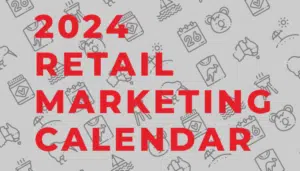If there’s one thing synonymous with all kinds of Marketing in the world, it’s the cardinal rule of: ‘Customer is king‘. The sole purpose of Marketing is to inform, persuade and convert prospects into leads, and into customers. Thereafter, keeping those customers happy and satisfied is what leads to long term success. But is there a way to track how happy customers are over the long term? In case you’re thinking of feedback forms and surveys, that’s not what we’re talking about. In this article, we’re going to outline what the lifetime value of a customer is, and how you can calculate it for your business. And no, you don’t need to be a math expert to figure this one out! Read on below!
What is Customer Lifetime Value anyway?
Customer lifetime value (CLV) is essentially the total amount of money your customer is expected to spend on your products during their lifetime. CLV considers a customer’s revenue value, compared to the company’s predicted lifespan of that customer. Brands often use CLV stats to measure how valuable a customer is to their business. When compared to the cost of acquisition, companies can estimate how much they should be spending on customer retention.
CLVs can differ from industry to industry. Take for example, the CLV of a regular coffee drinker for a typical cafe in the suburbs of Sydney or Melbourne. Depending on the quality of coffee, vibe of the cafe and number of cups the customer drinks, the CLV could be quite high. Compare this to the CLV of a car owner who may or may not buy more vehicles down the line.
Why should I be interested in CLV?
The longer a customer continues to buy from your company, the greater the lifetime value is. If your business provides great customer support and service, knowing the CLV can help boost this process. Solving problems and offering personalised recommendations become easier, leading to more customer loyalty.
Customers with a high CLV are most likely fans of your business and will continue to purchase your products. If not, it’s possible that they made a ‘trial purchase’ and will need more money and effort to hook back in. Once you know your CLV, you can focus on customer retention to increase revenue. Driving CLV can also help entice existing customers to make more purchases. Since these customers are over 65% more likely to spend versus new customers, driving this forward can do wonders for your business.

Moreover, knowing your Customer lifetime value can help determine your most profitable products and services. Customers with the highest CLVs will want certain products and services; these are the stars of the show.
With that set, let’s find out how to calculate your customer lifetime value in 3 easy steps. Follow along!
How to calculate Customer Lifetime Value?
As we mentioned, you don’t need to be a math expert to be able to calculate customer lifetime value. All you need is a few numbers, and a handy dandy calculator:

So now let’s unwrap each of these.
Using the example of a clothing business, let’s discuss the CLV of a young customer buying shirts. The average value of a purchase is essentially the amount the customer pays for a product or service. In this case, that’s the shirt. Let’s say it’s about $50.
The number of purchases per year is just as it sounds; how often the customer buys a shirt from the company. Let’s say about 4 times.
Lastly, the average lifetime of the customer relationship. This is how many years the customer remains loyal to the business and keeps purchasing shirts from them. Assuming the quality is good, let’s say about 8 years.
Plugging that together, we have:
CLV = $50 x 4 x 8 = $1,600
If you were to compare this figure with another, older customer with different purchase habits, you might find a different value. For example, an older customer who buys the same $50 shirt but thrice a year, and remains loyal for 5 years. Here, the customer lifetime value is:
CLV = $50 x 3 x 5 = $750
Given this comparison, it’s clear that the clothing store should try focusing its marketing efforts towards the young customer more. This analysis will help you identify how much money you need to spend for customer acquisition. It will also help you find out the best selling products and most profitable client demographic.
Tips to improve Customer Lifetime Value
Now that you know how to calculate customer lifetime value, let’s discuss some tips on improving it:
- Provide impeccable customer service: A sure shot way of incentivising customers to buy more is to show them you care. Ask questions, address problems and you’ll be surprised how customers flock towards your business.
- Offer discounts and benefits: Another way to keep customers happy is to offer special vouchers, discounts and loyalty program benefits. These benefits will entice customers to make repeat purchases and increase their CLV numbers.
- Increase average value of purchase: Focus on marketing expensive, high end items and upsell other items to increase the average value of the purchase. More sales and more CLV!
To wrap up:
Customer lifetime value is a great metric for you to keep a tab on your customer base. By calculating your CLV, you can find out how to allocate your spending, and compare performance overtime to help achieve your goals. Time to get those numbers up and running!
What is Customer Lifetime Value (CLV) useful for?
Customer lifetime value is the total amount of money your customer is expected to spend over their lifetime, affiliated with your business. The longer your customer buys from your company, the higher the CLV would be. Therefore, companies often measure CLVs to compare and assess the most profitable customers.
Companies also use CLVs to analyse which products and services are the best selling, so as to push them further. Getting a sense of well-performing customers and products helps organisations find out how much to spend on customer acquisition. Accordingly, decisions can be made about marketing, retargeting and customer retention.
How do I calculate Customer Lifetime Value?
CLV doesn’t require a PHD in Mathematics if that’s what you’re wondering. A handy calculator will do the trick. To calculate CLV, all you need to do is use the following formula:
CLV : Average value of a purchase x Number of purchases (per year) x Average lifetime of customer relationship (in years)
Where….
- Average value of a purchase is the amount a customer pays for a typical purchase. For example, in a coffee shop the value could be $5 for a cup of coffee
- Number of purchases (per year) is the number of times the customer visits the store to make a purchase. In our coffee shop example, this could be 300 days if they’re an avid coffee drinker.
- Average lifetime of customer relationship (in years) is the length of time that the customer remains loyal to the store and continues to make repeat purchases. If we assume the cafe’s coffee is good, we can say about 4 years.
Thus, the CLV comes to: $5 x 300 x 4 = $6000
That’s how much your customer is worth, so make your decisions accordingly!
How can I improve my Customer Lifetime Value?
In order to increase your CLV numbers, you should focus on providing exceptionally good customer service. This will help separate you from your competition and increase the average lifetime of customer relationship. You should also try upselling your items to increase the average value of your purchase. Thirdly, you can offer special discounts and loyalty benefits for members to keep them making repeated purchases. All these will increase the individual variables of the formula, improving your overall CLV.
Insil is a boutique Australian Marketing Agency, providing customers with a holistic approach to Design Thinking and Marketing Services. Are you interested in generating more sales, increasing traffic and attracting higher quality leads? Sign-up to receive a free, no-obligation strategy session TODAY.




